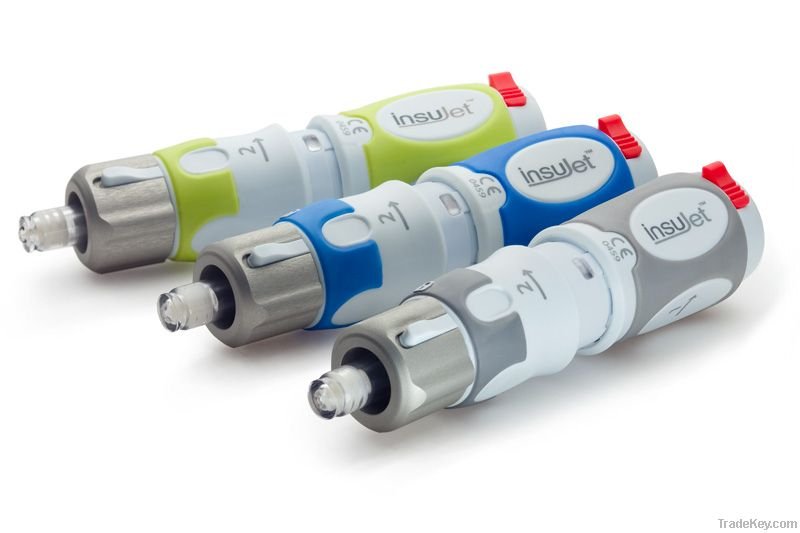Managing diabetes has always been a challenge, largely due to the need for frequent insulin injections. Needle phobia, pain, and compliance issues make this treatment cumbersome for millions of patients worldwide. But now, researchers have developed a needle-free insulin delivery method using a skin-permeable polymer, raising hopes for a non-invasive insulin alternative that could transform diabetes management.
How Needle-Free Insulin Works
Traditional insulin injections deliver the hormone directly into the bloodstream. While effective, they come with challenges: needle pain, risk of infection, and inconvenience for daily use. Oral insulin is not viable because the digestive system breaks it down before it can work.
The new approach, called transdermal insulin delivery, uses a specially designed polymer attached to insulin. When applied to the skin like a cream or patch, this polymer carries insulin through the skin layers and into the bloodstream. Researchers have tested this method in mice and mini pigs, whose skin closely resembles human skin, and found that it lowers blood glucose as quickly as traditional injections.
Pros of Transdermal Insulin Delivery
-
Non-invasive: Eliminates the need for needles
-
Convenient: Could replace multiple daily injections
-
Reduced anxiety: Beneficial for patients with needle phobia
-
Sustained action: Blood glucose levels stay normal longer than standard injections
Cons and Challenges
-
Long-term safety unknown: Humans use insulin for decades, so more testing is needed
-
Dose accuracy: Careful calibration is required to avoid hypoglycemia
-
Regulatory hurdles: Approval will require extensive clinical trials
The Science Behind Skin-Permeable Polymers
The polymer is engineered to interact with different layers of the skin, exploiting variations in pH to penetrate the surface. The skin’s outermost layer is slightly acidic (pH 4-5), while deeper layers are neutral (pH ~7). The polymer starts positively charged, binds to fatty acids in the top layer, and then becomes neutral at deeper layers, detaching and moving the insulin further into the skin.
Pros of Polymer-Based Delivery
-
Targeted transport: Directs insulin to tissues that regulate glucose, such as the liver
-
Non-damaging: Unlike microneedles or ultrasound, it doesn’t compromise skin integrity
-
Versatile: Could potentially deliver other drugs beyond insulin
Cons
-
Complex manufacturing: Producing stable polymer-insulin compounds is technically demanding
-
Limited human data: Results so far are only from animal models
Effectiveness in Animal Models
In diabetic mice and mini pigs, transdermal insulin normalized blood glucose within 1-2 hours, comparable to injections. Blood glucose remained stable for 12 hours, significantly longer than the 4-hour effect of injected insulin. These results highlight its potential for reducing injection frequency and improving patient quality of life.
Advantages Observed
-
Comparable speed to injections
-
Longer-lasting glucose control
-
Reduced skin trauma compared to repeated injections
Limitations in Research
-
Animal skin differs slightly from human skin, so human trials are essential
-
Possible variations in absorption based on skin type and location
Potential Impact on Diabetes Management
A needle-free insulin cream or patch could have wide-ranging effects:
For Patients
-
Improved adherence to insulin therapy
-
Reduced fear and pain associated with injections
-
More flexibility in dosing and lifestyle
For Healthcare Systems
-
Fewer complications from injection-related infections
-
Lower long-term healthcare costs due to better glucose control
-
Simplified training for patients and caregivers
Challenges Ahead
-
Ensuring consistent dose delivery
-
Evaluating long-term safety in humans
-
Scaling production for global availability
Future Applications Beyond Insulin
Researchers are already exploring transdermal delivery for other drugs, including active ingredients in medications like Ozempic for weight loss. This could open doors to needle-free delivery of hormones, vaccines, and other protein-based therapies, making treatment easier and safer for millions of patients.
Pros of Expanding to Other Drugs
-
Broad applicability for chronic diseases
-
Reduces injection-related anxiety for patients
-
Encourages adherence to long-term treatment plans
Cons
-
Each drug requires unique polymer formulation
-
Safety and efficacy must be validated individually
-
Regulatory approvals may take years
Expert Opinions
Bioengineer Youqing Shen of Zhejiang University notes that “Transdermal drug delivery has been a longtime dream”, with significant investments made for insulin alone. Robert Langer of MIT highlights that human trials will be critical for evaluating effectiveness and long-term safety, emphasizing the importance of careful dose control.
Pros and Cons Summary
Pros:
-
Non-invasive, painless alternative to insulin injections
-
Rapid and long-lasting glucose control in animal studies
-
Potential for broader drug delivery applications
-
Reduces risk of skin complications from repeated injections
Cons:
-
Limited human data, long-term safety unknown
-
Dosing accuracy and formulation challenges
-
Regulatory and manufacturing hurdles for commercial use
Conclusion: A Promising Future
The development of needle-free, transdermal insulin delivery represents a major breakthrough in diabetes care. While human trials are necessary, early research in mice and mini pigs demonstrates that insulin can be delivered as effectively as injections without needles. Beyond insulin, this approach could revolutionize drug delivery for various therapies, making treatment simpler, safer, and more patient-friendly.
As research progresses, patients, healthcare providers, and regulators will closely watch how this technology evolves. If successful, needle-free insulin and polymer-based drug delivery could become a cornerstone of modern, non-invasive medical treatment.


